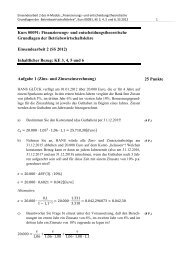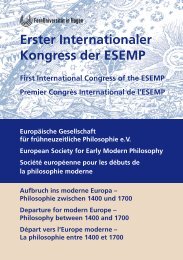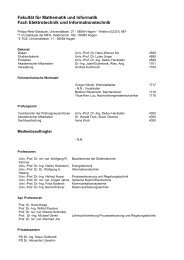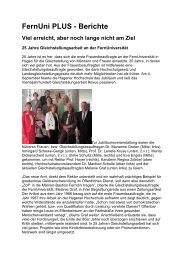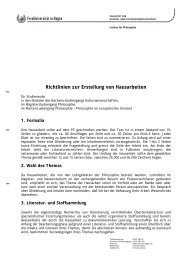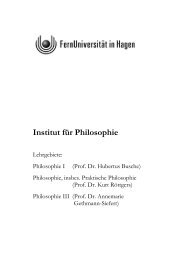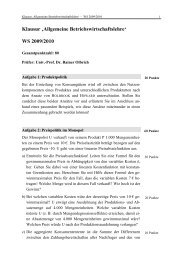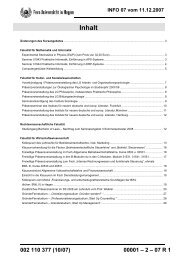An Invitation to Random Schr¨odinger operators - FernUniversität in ...
An Invitation to Random Schr¨odinger operators - FernUniversität in ...
An Invitation to Random Schr¨odinger operators - FernUniversität in ...
You also want an ePaper? Increase the reach of your titles
YUMPU automatically turns print PDFs into web optimized ePapers that Google loves.
probability one. We do not know whether this <strong>in</strong>tersection has full measure, <strong>in</strong> fact<br />
we even don’t know whether this set is measurable.<br />
THEOREM 5.5. The measures ν L converge vaguely <strong>to</strong> the measure ν P-almost<br />
surely, i.e. there is a set Ω 0 of probability one, such that<br />
∫<br />
∫<br />
ϕ(λ) dν L (λ) → ϕ(λ) dν(λ) (5.10)<br />
for all ϕ ∈ C 0 (R) and all ω ∈ Ω 0 .<br />
REMARK 5.6. The measure ν is non random by def<strong>in</strong>ition.<br />
PROOF: Take a countable dense set D 0 <strong>in</strong> C 0 (R) <strong>in</strong> the uniform <strong>to</strong>pology. With<br />
Ω ϕ be<strong>in</strong>g the set of full measure for which (5.10) holds, we set<br />
Ω 0 = ⋂<br />
Ω ϕ .<br />
ϕ∈D 0<br />
S<strong>in</strong>ce Ω 0 is a countable <strong>in</strong>tersection of sets of full measure, Ω 0 has probability one.<br />
For ω ∈ Ω 0 the convergence (5.10) holds for all ϕ ∈ D 0 .<br />
By assumption on D 0 , if ϕ ∈ C 0 (R) there is a sequence ϕ n ∈ D 0 with ϕ n → ϕ<br />
uniformly. It follows<br />
∫<br />
|<br />
∫<br />
≤ |<br />
∫<br />
+ |<br />
∫<br />
+ |<br />
∫<br />
ϕ(λ) dν(λ) −<br />
∫<br />
ϕ(λ) dν L (λ)|<br />
ϕ(λ) dν(λ) − ϕ n (λ) dν(λ)|<br />
∫<br />
ϕ n (λ) dν(λ) − ϕ n (λ) dν L (λ)|<br />
∫<br />
ϕ n (λ) dν L (λ) − ϕ(λ) dν L (λ)|<br />
31<br />
≤<br />
|| ϕ − ϕ n || ∞ · ν(R) + || ϕ − ϕ n || ∞ · ν L (R)<br />
∫<br />
∫<br />
+ | ϕ n (λ) dν(λ) − ϕ n (λ) dν L (λ)| . (5.11)<br />
S<strong>in</strong>ce both ν(R) and ν L (R) are bounded by 1 (<strong>in</strong> fact are equal <strong>to</strong> one) the first two<br />
terms can be made small by tak<strong>in</strong>g n large enough. We make the third term small<br />
by tak<strong>in</strong>g L large.<br />
□<br />
REMARKS 5.7.<br />
(1) As we remarked already <strong>in</strong> the above proof both ν L and ν are probability<br />
measures. Consequently, the measures ν L converge even weakly <strong>to</strong> ν, i. e.<br />
when <strong>in</strong>tegrated aga<strong>in</strong>st a bounded cont<strong>in</strong>uous function (see e. g. [12]).<br />
Observe that the space of bounded cont<strong>in</strong>uous functions C b (R) does not<br />
conta<strong>in</strong> a countable dense set, so the above proof does not work for C b<br />
directly.




